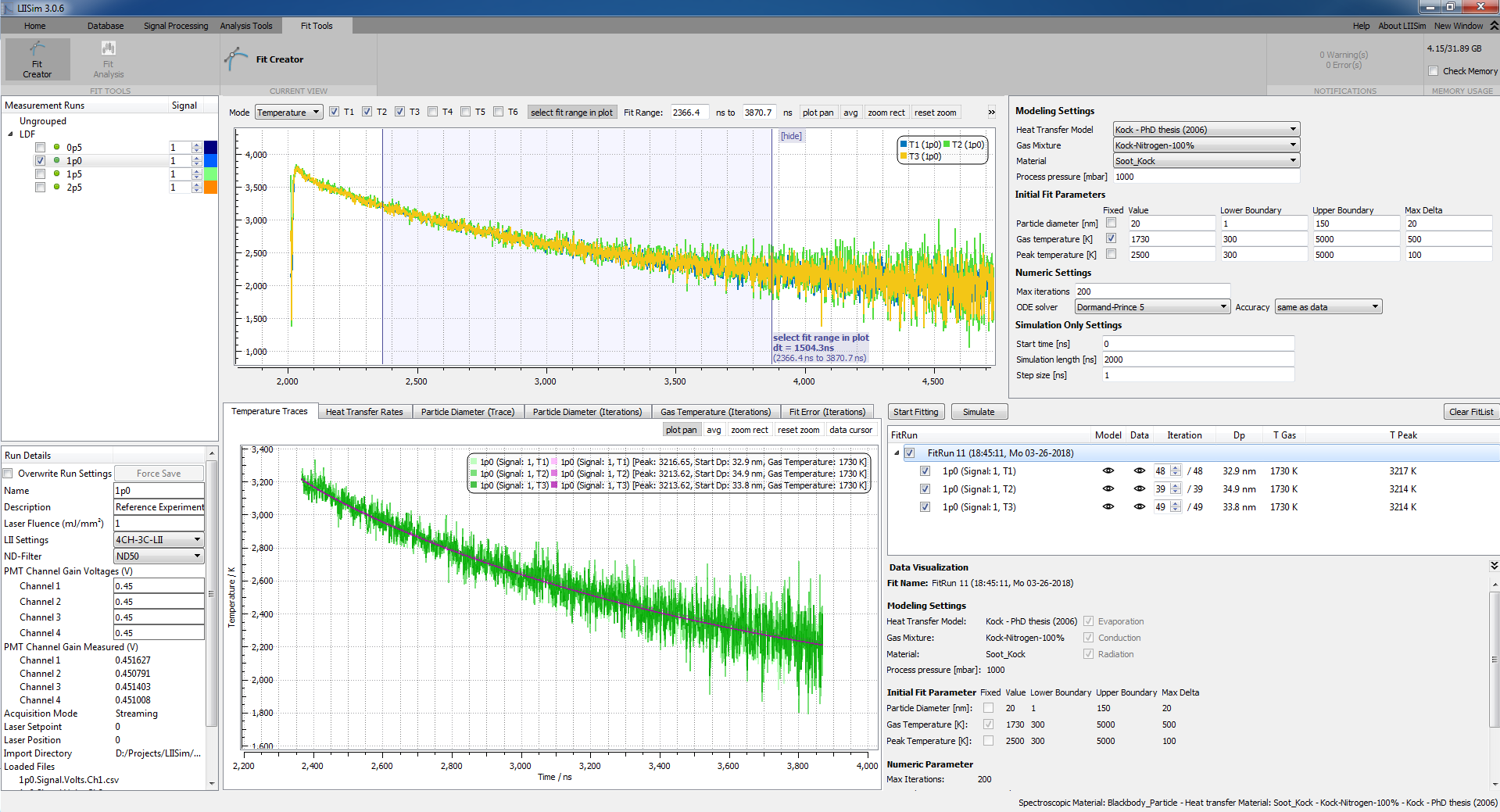Laser-induced incandescence (LII) is a non-intrusive method of measuring soot particle volume fraction and primary particle sizes in flames. Not only restricted to flames, this technique is recently used for characterization of car engine exhaust, atmospheric black carbon and synthetic nanoparticles. These new applications require the same basic signal processing, but at the same time individual databases for material (soot or non-soot) and gas compositions as well as individual heat transfer models for the determination of particle sizes. LIISim is a framework for basic signal processing and analysis of experimental LII data to help researches across the world to compare their experimental data.
The old LIISim.com web interface (by Max Hofmann) can be found here.
The software is described in the following paper:
R. Mansmann, T. Terheiden, P. Schmidt, J. Menser, T. Dreier, T. Endres and C. Schulz: "LIISim: a modular signal processing toolbox for laser-induced incandescence measurements" Appl. Phys. B 124(4), 69 (2018). DOI 10.1007/s00340-018-6934-9
Signal Processing
The modular signal processing toolbox allows processing of raw signals, absolute signals and temperature traces. Processing steps can be individually set and arranged. Intermediate processing results can be visualized and analyzed with various plot tools.
Learn more
Analysis Tool: Temperature Fit
Visualization of spectral temperature fitting using Planck’s law. Temperature traces that are calculated in the SignalProcessing module can be analyzed and all fitting iterations can be visualized.
Learn more
Analysis Tool: Parameter Analysis
Experimental data can be systematically compared for various parameters (i.e., laser fluence, LII peak temperature, PMT gain voltage,…).
Learn more
Fit Creator
Select from a variety of heat transfer models and databases for simulation of LII signal traces and comparison with experimental data.
Learn more





